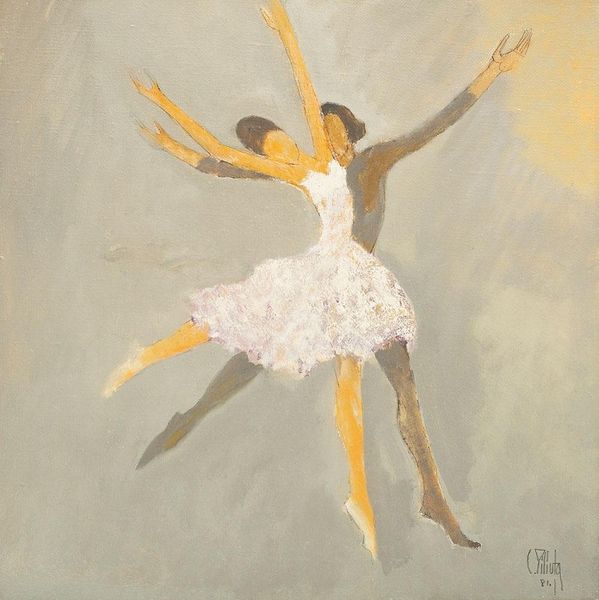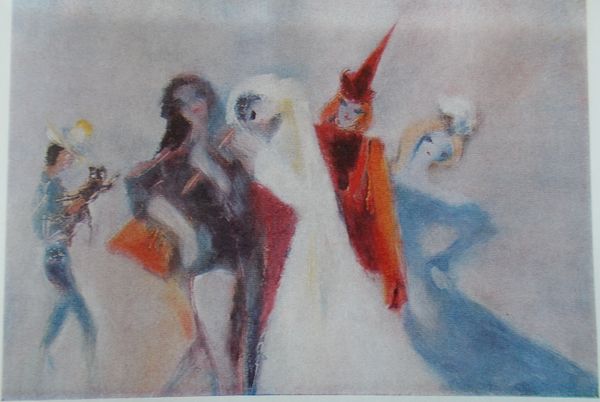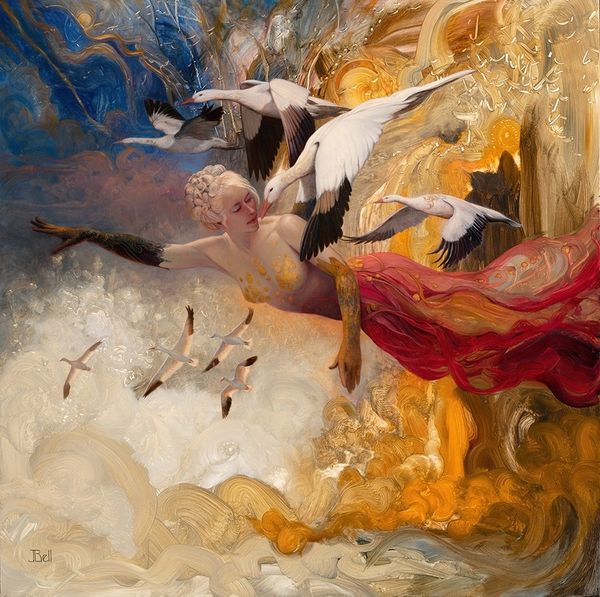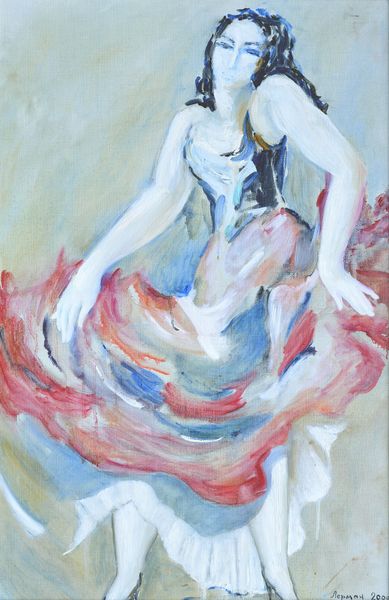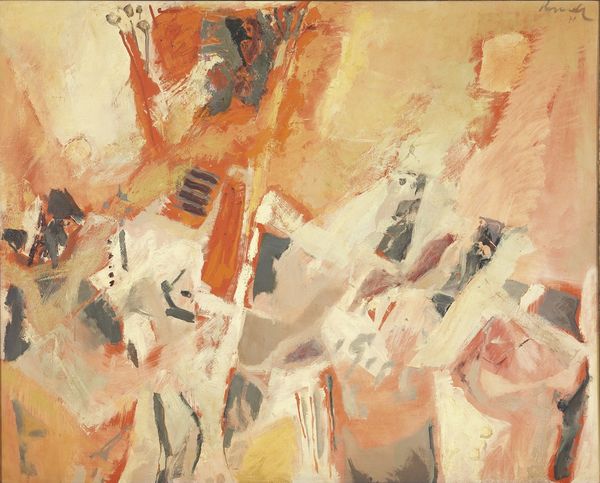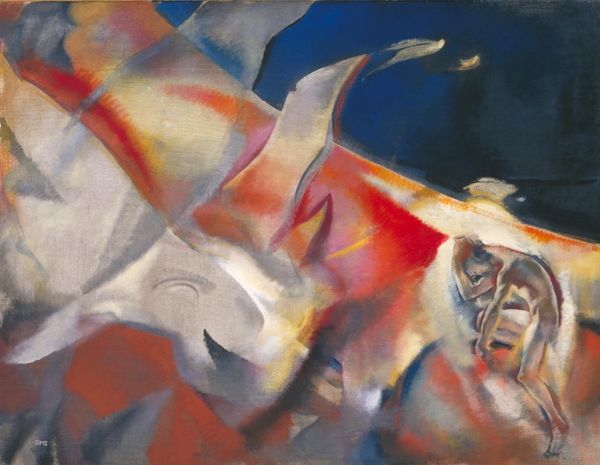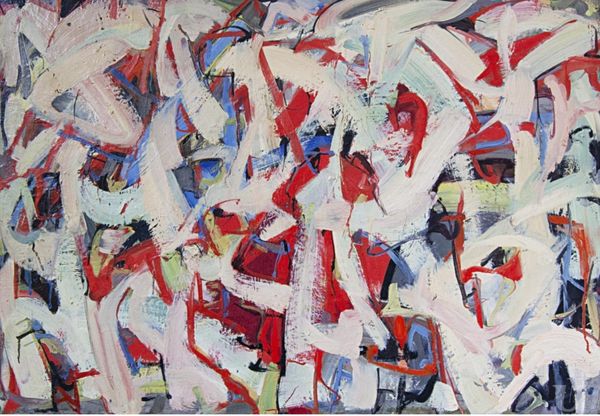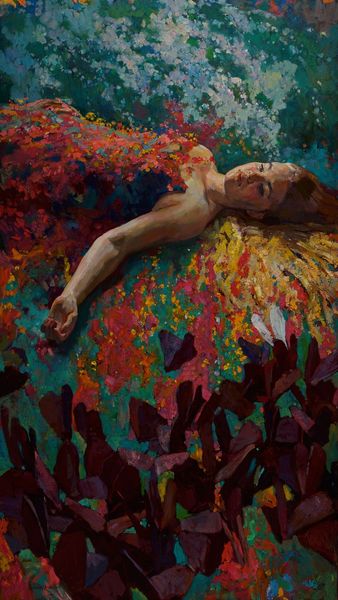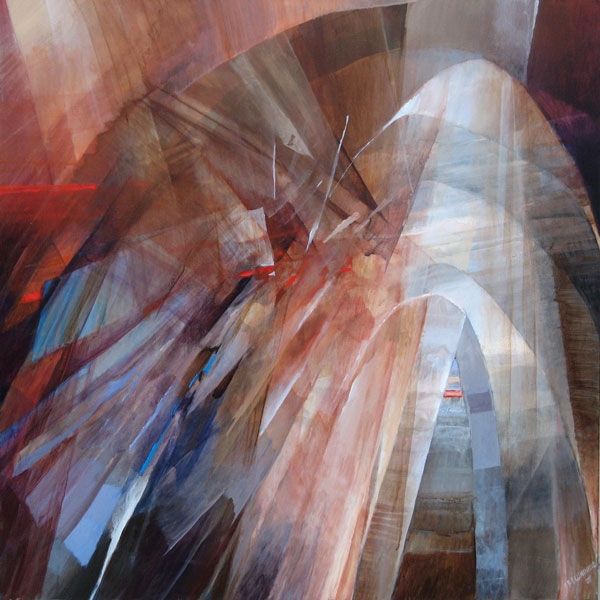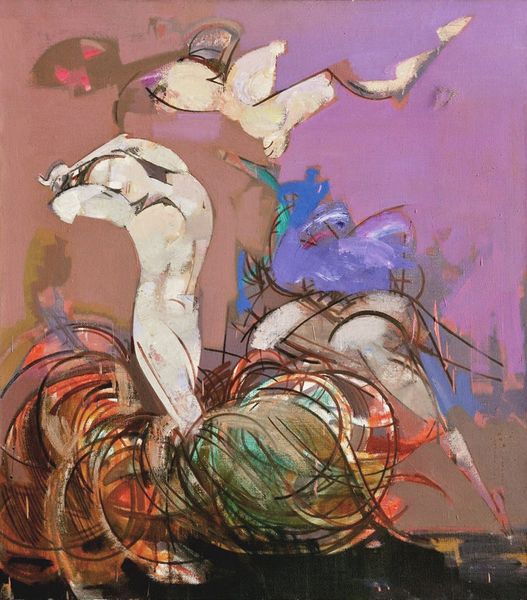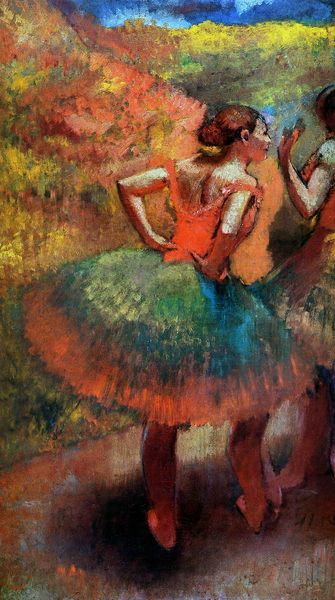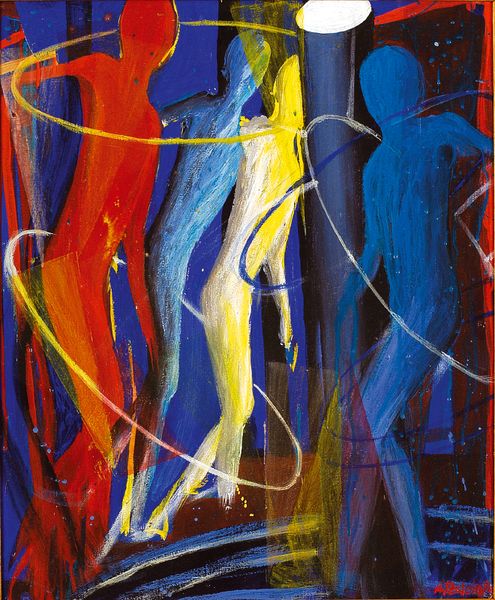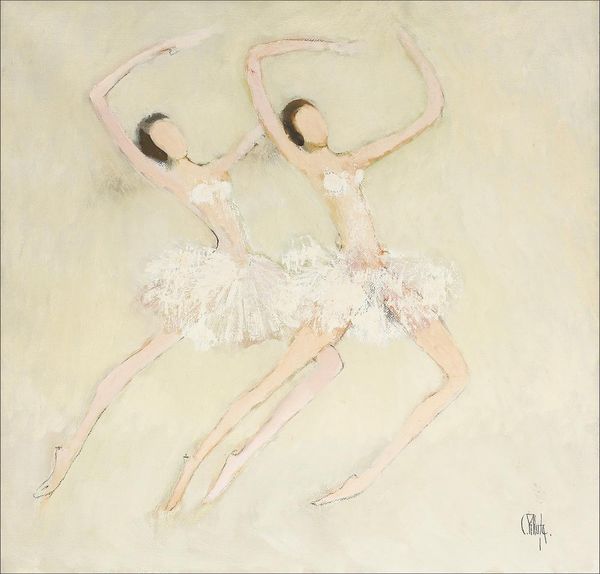
Dimensions: 76.2 x 121.92 cm
Copyright: Rochelle Blumenfeld,Fair Use
Curator: Rochelle Blumenfeld created "No Where To Run" in 2012, using acrylic paint. What are your initial thoughts? Editor: It’s intensely dynamic. The figures seem caught in a fragmented, almost claustrophobic space, heightened by the aggressive geometry and those bold strokes of red. It feels unsettling, trapped. Curator: Indeed. Blumenfeld's use of acrylic lends itself to layering and bold color application, which reinforces that sense of urgency and tension. We should consider the artist's practice and how that may impact the visual experience. Editor: Looking at the formal qualities, the figures are expressionistically rendered, their limbs elongated and bodies almost dissolving into the background. I see that dissolving contributing to the feeling of unease and the struggle for escape. What do you observe about her brushstrokes and paint application? Curator: Blumenfeld often works in series, exploring themes of movement, freedom, and confinement. I wonder if this piece emerged from the artist's personal experience. Note, also, the visible traces of the artist's hand: drips, visible brushstrokes, almost as if to remind us of the physical act of creation, of the labor involved in manifesting these figures' struggle. Editor: The dynamism arises precisely from that tension between the geometric abstraction and the figurative elements. The palette also restricts itself to shades of red, brown and muted grey adding to the anxiety and urgency conveyed. Curator: Red, so often connected to emotions like rage, passion, or even warning, might be tied into specific socio-economic factors within Rochelle’s immediate environment when this painting was rendered. Editor: Precisely. By looking closely at her construction of planes and figures within that restricted palette, a fascinating tension between stasis and movement emerges. Curator: Reflecting on "No Where To Run," its visual impact invites a broader discourse surrounding the artist’s influences and context that drove Blumenfeld's visual language. Editor: Ultimately, Blumenfeld created this emotionally resonant, visually compelling expression of a deep human state, making for a rather evocative statement through formal, structural composition.
Comments
No comments
Be the first to comment and join the conversation on the ultimate creative platform.
